by Dot Cannon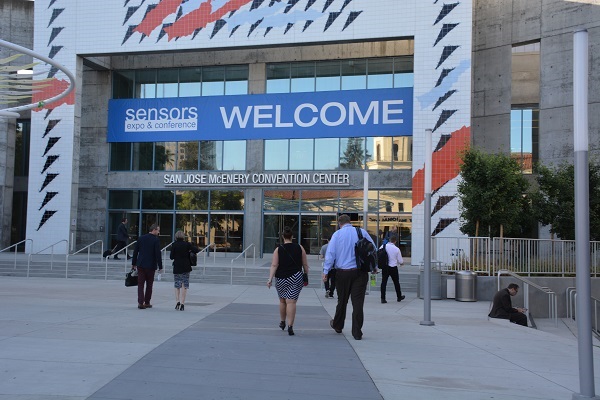
Autonomous drones? A robotic vacuum that zooms back to charge itself? A hospitality robot?
Those were just three of many concepts being discussed at Day 1 of the 2016 Sensors Expo and Conference, in San Jose, on Wednesday.
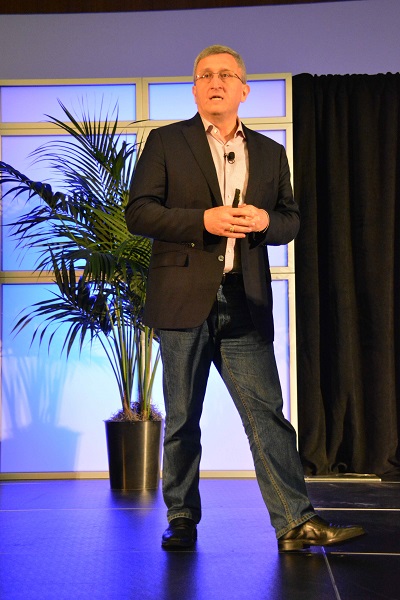
Day 1 started with an opening keynote, “Are Your Sensors a Feature Or a Discriminator?” by Dr. Kaigham J. Gabriel, President and CEO of Draper Technology.
“I want to talk to you about getting closer to the user,” Dr. Gabriel told the audience. “The companies closer to the users…control the timing of introduction of products.”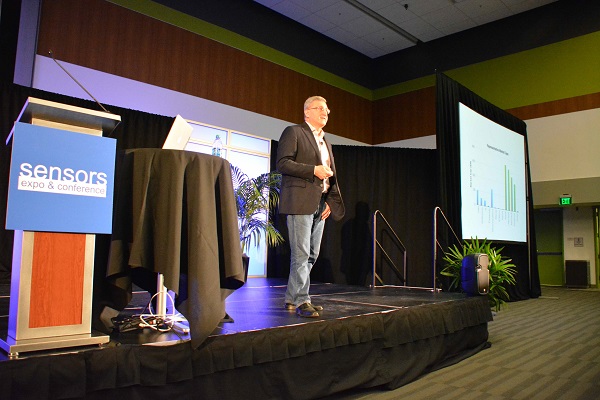
Displaying a slide showing big names in technology, including Microsoft, Facebook, and Twitter, getting most of users’ business, he asked, “Is that something that we’re OK with letting continue to happen?”
The alternative, Dr. Gabriel suggested, was to get closer to the user through the Internet of Things.
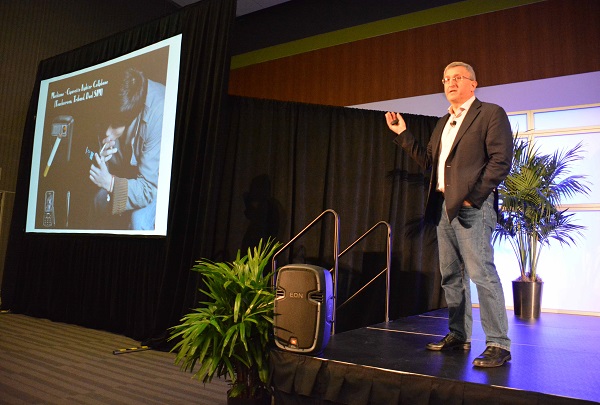
“This is a cellphone with an integrated oxygen lighter,” he said. “That started me thinking, ‘what if I wanted a blood oxygen sensor?… An incense burner?'”
The result of that “what if” was Project Ara–an initiative on which Dr. Gabriel worked until two years ago. Project Ara will be releasing a customizable modular phone in 2017. 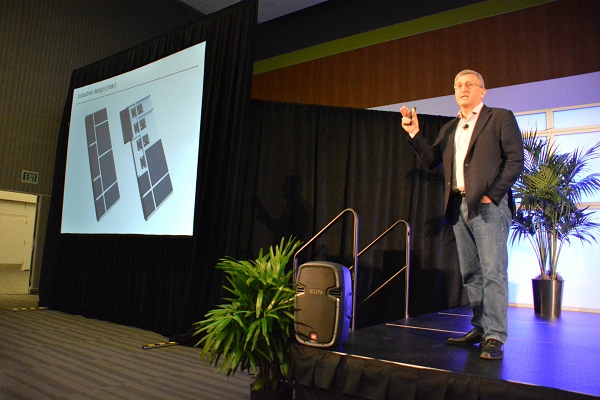
“The fundamental premise of Ara is that nothing is fixed,” Dr. Gabriel said. “You can put in anything. You let people customize the hardware in the same way they’re customizing their apps and their software.”
This new, customizable modular phone is set for a release in autumn of 2016, according to Project Ara’s website. Dr. Gabriel told his audience that this new concept represented a major opportunity for smaller developers.
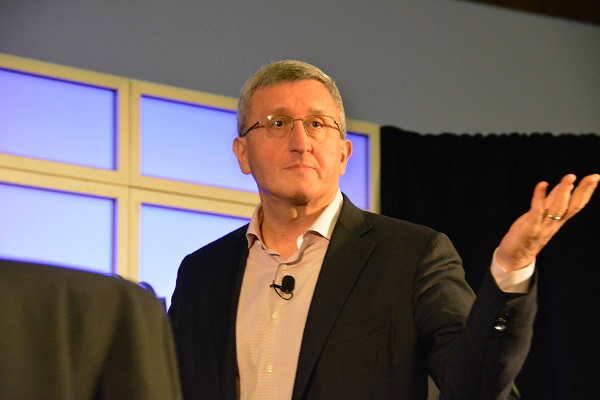
“This is the first crack in the monolithic black boxes that are mobile devices,” he said. “Let’s change the game, particularly for the IoT. If we can do that, we can go from being the guys on the left (with very little of the market share), to the guys on the right.
“Right now, the choices about hardware for billions of people are being made by dozens of people. And I think that’s wrong.”

At 10:00 , the exhibit floor opened.
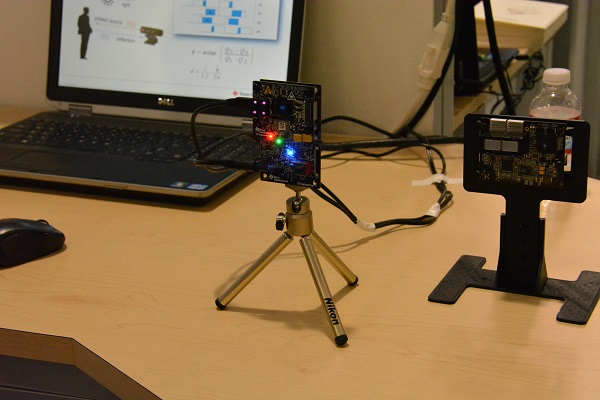
One of our favorite displays was Texas Instruments’, which had a kit for a 3D camera. Here’s the link to the technology it uses, which exhibitor Larry Li told us is currently available.
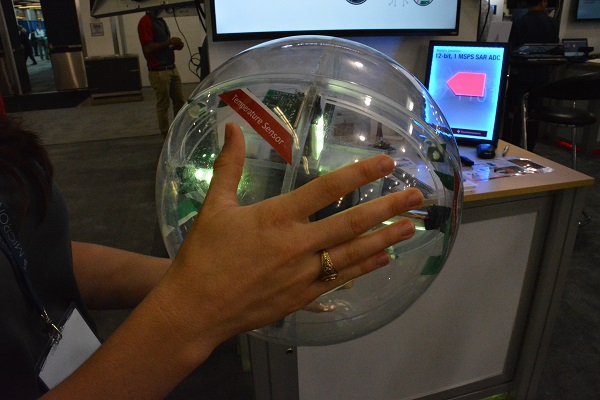
Also at the Texas Instruments booth: this sensor ball. It registers temperature, light and the rate of the holder’s heartbeat.
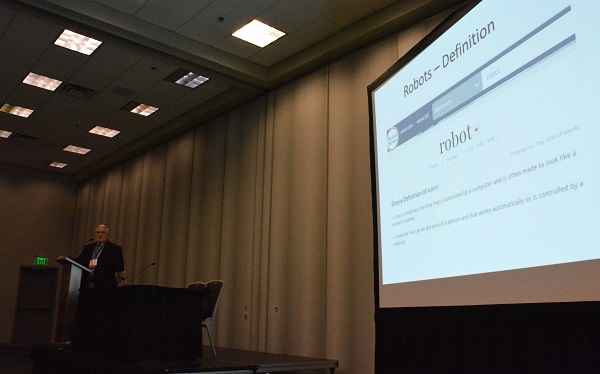
A favorite morning talk was Technology/Strategy Research Analyst Francis Rabuck’s “Robots in 3D”, during which he made some intriguing predictions.
“Vision is really going to accelerate (in robots)…due to VR and AR,” he said. “Within two to three years, you’ll have cameras in your cellphones that will, I’m sure, capture a 360 image.”
He also offered a look at the ways robotics are set to change the workforce. Some jobs, he explained, will definitely be going away. “China is replacing human workers with lights-out robot factories. If China’s doing that, Detroit is not going to have a comeback.”
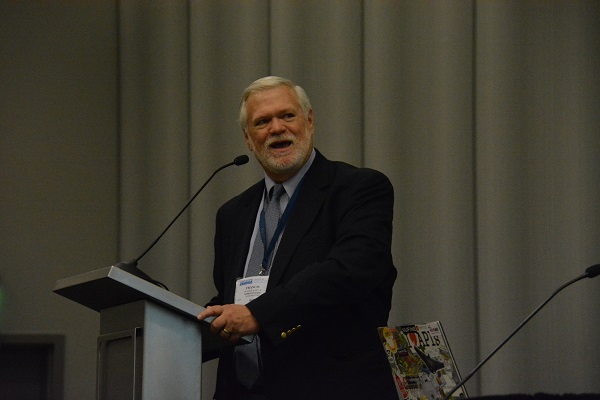
However, Rabuck said, automation means creating new jobs, as well. “Somebody’s going to need to care for the robots being made.”
And current research involves getting robots to understand emotions and subtext. “Theoretically there will be robots in customer service areas. We all know that look from mom or dad, ‘just wait till your father gets home.’ (But robots don’t).”
“The biggest challenge is going to be a lot of the social/political policy legislation. We’re seeing that now with the drone.
“I can see a world, once we get past the legal issues, where drones (go autonomous). If cars are autonomous, drones are going to be autonomous.”
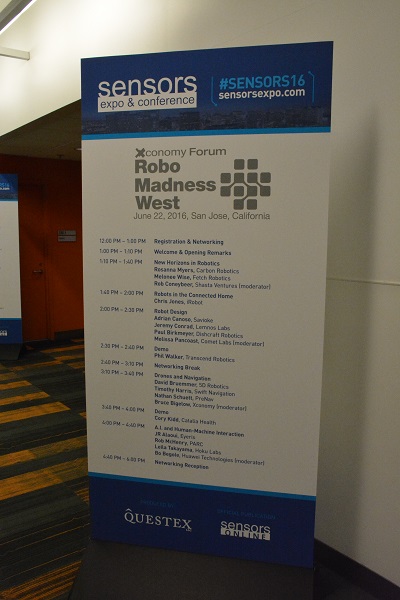
Robots were very much a part of Day 1’s afternoon agenda. This was a new feature of Sensors Expo this year.
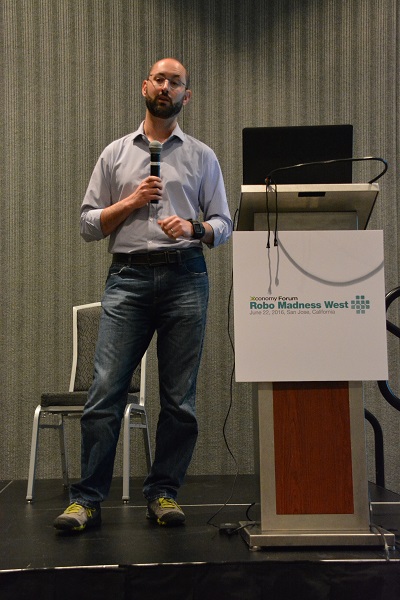
A highlight of the”Robo Madness West” sessions was a presentation by iRobot Technology VP Chris Jones , who showed the audience slides of the new “Roomba 980”. This is the world’s first connected vacuum robot! Using only sensors, the new Roomba systematically maps and navigates the home. And users don’t have to worry about the battery dying.
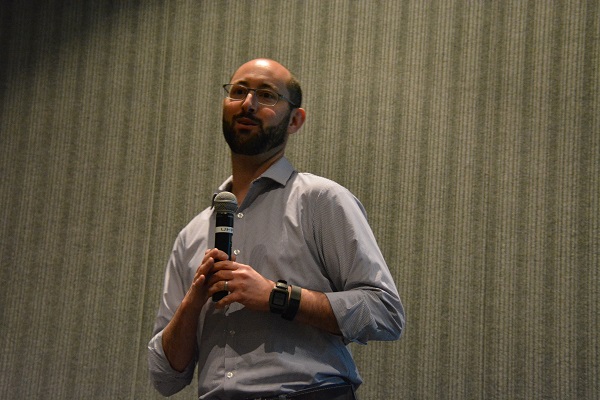
“When it needs to recharge, it does a beeline back to the docking station,” Jones said.
Robo Madness West attendees also had the opportunity to get acquainted with a hospitality robot.
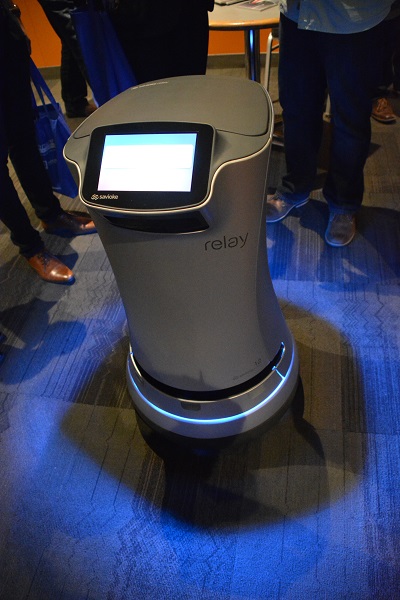
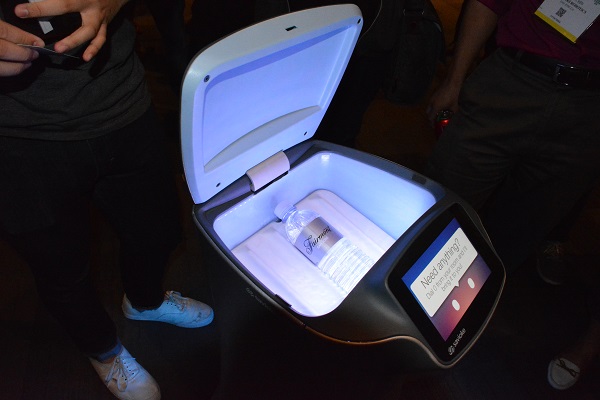
This is “Relay”, created by Savioke and designed to carry items to hotel guests.
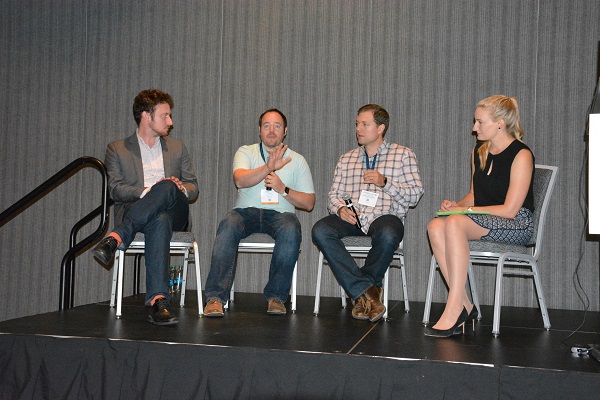
During a panel on “Robot Design” with moderator Melissa Pancoast of Comet Labs, Savioke Co-Founder Adrian Canoso talked about some of the psychological considerations of having Relay perform this task.
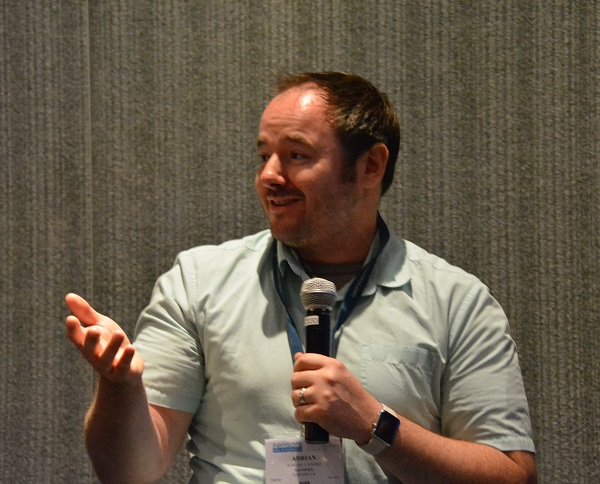
“We found, for people walking by the robot, it was inherently creepy,” Canoso said. “Relay’s always saying who he is and what he’s up to.”
